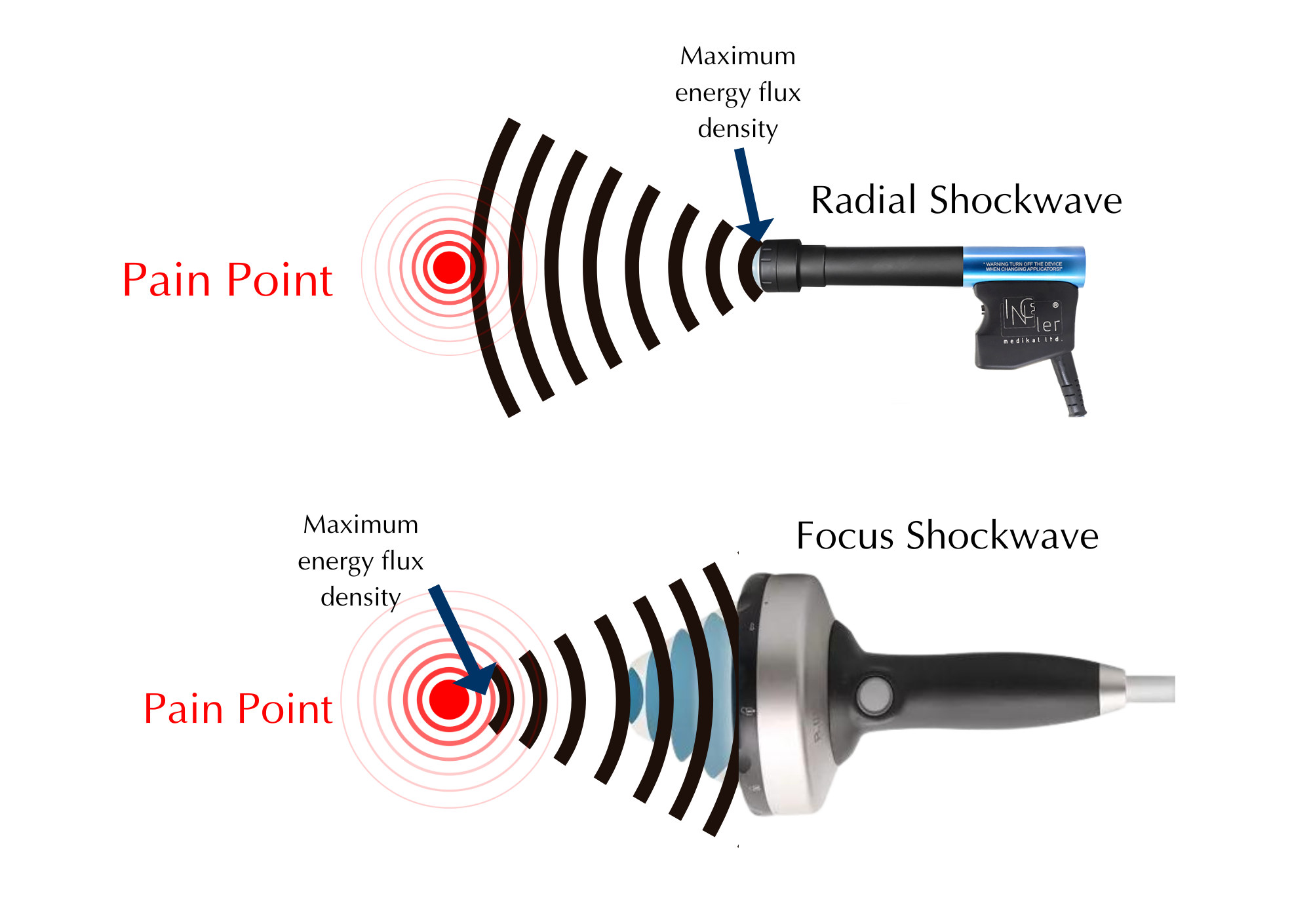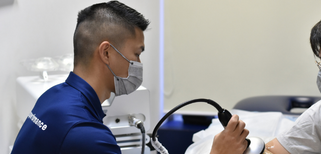




Health Information



Comparing the differences between Focus Shockwave vs Radial Shockwave
Know the difference between Radial Shockwave and Focus Shockwave
Like you and I, most city dwellers in Hong Kong live with various muscle pain and strains because of incorrect sitting posture or trauma in sports or accidents. In most cases, we seek a physiotherapist to relieve the pain. There is a misconception that physiotherapy treatments are limited to massage and exercise prescriptions. Some of us may have heard about different waveform treatments; however, questions and doubts remain: What are the differences between them? Do they treat similar conditions? What would a physiotherapist use to treat your chronic condition?
A more in-depth comparison between Radial and Focus shockwaves.
We now know that ESWT (Extracorporeal Shockwave Therapy) is a non-invasive medical procedure used to treat acute and chronic musculoskeletal conditions. Currently, there are two types of shockwave therapy ESWT: radial pressure wave (RSWT) and focus shockwaves (FSWT).
 |
This article goes right into the comparisons between the Focus and the Radial; for more readings about what Sportsperformance provides shockwave services, you can refer to Focus Shockwave Service on our website. Another article pertains to most of the commonly asked questions about focus shockwave therapy can be found here.
Radial Shockwave Therapy (RSWT)
Radial pressure shockwave therapy was commonly used in most Musculoskeletal clinics.
The radial shockwave comprises three parts:
- Ultrasonic pulses
- Audio Acoustic Pulses
- Slow shear waves
Most of the Radial shockwave equipment has a gun-like probe. The kinetic energy created through the probe is transmitted to the skin and goes further as a “radial wave” across the treatment area.
The characteristic of Radial shockwave
Radial shockwave has their greatest energy at their source – the tip of the gun. It gets weakened as it travels. The shockwave loses its power the further it travels through the body. Thus, for treatment where the targeted tissue is superficial (shallow), radial shockwave usually gives good results. Conditions such as plantar fasciitis, tennis elbow or Achilles tendon usually make good progress with radial shockwave.
Focus Shockwave Therapy (FSWT)
Focus Shockwave, due to the increased treatment options, treatment depth, treatment precision, and patient comfort in more acute cases focused shockwave therapies are growing in popularity.
The characteristic of Focus Shockwave Therapy
Focus Shockwave has a smaller focal point for greater accuracy and a greater treatment depth of up to 44mm. FWST can penetrate deeper into the tissues and provide maximum power at the designated depth. Focus Shockwave penetrating depth can also be adjusted by altering the machine's energy output or by adjusting the focusing mechanism. This characteristic allows Focus Shockwave to treat targeting tissue from a superficial level to a deeper level, such as tissue close to the bone.
Focus Shockwave and Radial Shockwave Therapy comparison at a Glance
When comparing both therapy types, the primary consideration is the treatment's penetration depth and localization. The greater the depth penetration of the waves, the easier it is to treat deep-lying tissues. Following is the summary comparison between RSWT and FSWT
|
|
Radial shockwave (RSWT) |
Focus shockwave (FSWT) |
|
Wave form |
Divergent |
Convergent |
|
Energy output |
Lower maximum intensity |
Higher maximum intensity |
|
Adjustable penetration |
NO |
YES |
|
Treatment depth |
Superficial 3-4cm treatment depth |
2–44mm treatment depth |
|
Discomfort level |
Patients would feel more discomfort as the RSWT is strongest on the skin surface.
|
The wave produced by FSWT can focus on the targeted depth without discomfort on the skin surface. |
|
Treatment range |
Best use for a chronic case
|
Apart from Chronic cases, FSWT can also be used in more acute cases. |
|
Good at |
Skin or close-to-skin conditions such as tennis elbow.
|
Providing relief on a more precise area and the ability to target deep-depth tissues such as the hamstring and hips.
|
|
Number of sessions |
Average RWST requires around 3-10 sessions |
FWST requires relatively fewer sessions in general. However, still depends on the individual’s circumstances. |




